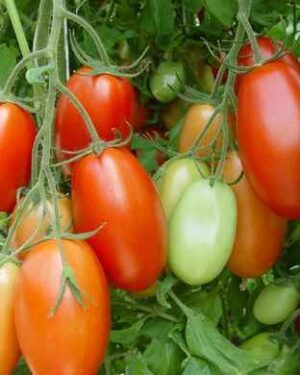Description
Carrot Atomic Red Seeds
Carrot Atomic Red Seeds A fantastic new variety helping restore the wide variety of carrot colours that were present before the 17th Century. ‘Atomic Red lives up to its name with 9-11’ long tapered roots that are a beautiful striking coral – scarlet colour that gets deeper and brighter when cooked. A strong flavoured and crispy variety when eaten raw that thrives in cooler weather. Best suited to spring and autumn sowings. 65-70 days
Cultivation Advice for Carrot Atomic Red Seeds
- Start planting Atomic Red carrots in early spring or late summer for a fall crop. Choose a location with loose, well-draining soil that receives full sun.
- Ensure the soil is free of rocks and clumps to allow carrots to grow straight. Work the soil deeply to avoid soil compaction.
- Sow the seeds directly into the prepared soil. Plant them about 1/4 to 1/2 inch deep and space them 2-3 inches apart in rows, with rows spaced 12-18 inches apart.
- Keep the soil consistently moist but not waterlogged. Ensure a regular watering schedule, especially during dry periods, to promote even germination.
- Thin seedlings once they reach a few inches in height to maintain proper spacing. Regularly remove weeds to reduce competition for nutrients.
- Prior to planting, incorporate compost or well-rotted manure into the soil. Avoid excessive nitrogen as it can cause forked roots.
- Keep an eye out for pests like carrot flies and practice crop rotation to prevent diseases. Cover with fine netting to protect against pests if needed.
-
harvesting
- Harvest carrots when they reach the desired size and color. Gently pull them from the soil, taking care not to damage the roots.
- Remove the foliage before storing carrots in a cool, humid environment, such as the refrigerator, to maintain freshness.
- Planting carrots near onions, leeks, or other root vegetables can deter pests and provide mutual benefits.
- Atomic Red carrots are excellent for fresh eating, salads, roasting, and adding color to various dishes.
- Continuously monitor plant health and adjust watering and care practices based on observations.
- Thinning is crucial for carrot growth. Ensure adequate spacing between plants by thinning out weaker seedlings, allowing the stronger ones to mature properly.
- Maintain even moisture throughout the growing period. Irregular watering can lead to root cracking or forked carrots. Mulching can assist in moisture retention.
- Carrots need loose soil to grow straight and long. Dig deeply and break up any hardpan or compacted soil to encourage root development.
- Employ protective measures like floating row covers to safeguard young plants from carrot flies and other pests that might damage the crop.
- Keep the area around the carrots free of competing plants, especially those with dense foliage, to prevent shade and competition for nutrients.
- When growing for a fall harvest, consider planting seeds slightly earlier to allow sufficient time for the carrots to mature before the first frost.
- Regularly inspect the crop for signs of pests, diseases, or any other issues. Early detection allows for prompt intervention.
- Extend the harvest period by planting carrot seeds in intervals, ensuring a continuous supply of fresh carrots throughout the season.
- If frost is predicted, consider covering the crop with a layer of straw or garden fabric to protect against freezing temperatures.
- Young, tender thinned carrots are edible. Harvest and use them in salads or other dishes to minimize waste.
- Besides retaining moisture, mulch also helps in preventing the soil from forming a crust, making it easier for carrot seedlings to emerge.









Reviews
There are no reviews yet.